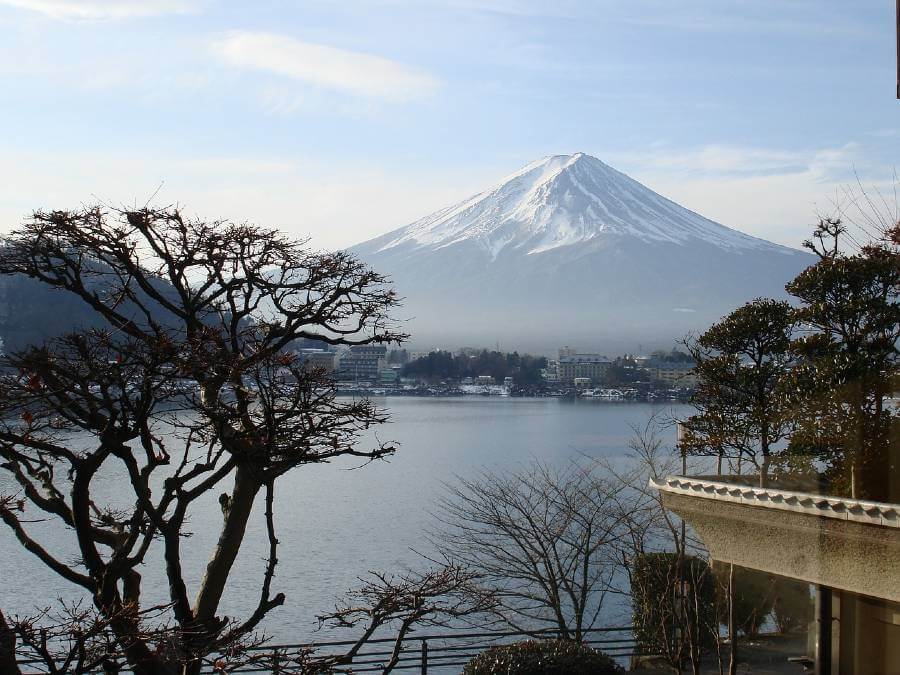Mount Fuji Climb Guide
Your Essential Mount Fuji Climb Guide
Climbing Mount Fuji is a popular activity for both Japanese and international tourists. Here is a guide to help you plan your climb:
- Timing: The best time to climb Mount Fuji is during the official climbing season, which usually starts in early July and ends in mid-September. This is when the weather is most favorable and the trails and mountain huts are open.
- Preparation: Make sure you have the proper gear for the climb, including comfortable hiking shoes, warm clothing, a waterproof jacket, and a headlamp or flashlight. It’s also important to be in good physical shape, as the climb can be strenuous.
- Trail Selection: There are four main trails that lead to the summit of Mount Fuji: the Yoshida Trail, the Subashiri Trail, the Gotemba Trail, and the Fujinomiya Trail. Each trail has its own unique features, so choose the one that best suits your hiking ability and experience.
- Accommodation: If you plan to hike overnight, there are mountain huts located along the trails that offer basic accommodation and food. These huts tend to get very busy during the peak climbing season, so it’s a good idea to book in advance.
- Safety: Climbing Mount Fuji can be dangerous, so it’s important to be aware of the risks and take necessary precautions. Make sure you’re familiar with the trail conditions, the weather forecast, and what to do in case of an emergency.
- Respect: Mount Fuji is a sacred mountain in Japan, so it’s important to respect the local customs and traditions. This includes following the designated trails, staying on the designated camping areas, and not littering.
By following these guidelines, you’ll be well on your way to a safe and enjoyable climb up Mount Fuji.
Mount Fuji Climbing Season
The climbing season for Mount Fuji typically starts in early July and ends in mid-September. During this time, the trails are open, the weather is generally favorable, and the mountain huts are in operation.
However, it’s important to note that the conditions on the mountain can change quickly, so it’s always a good idea to check the latest weather forecasts and trail conditions before setting out. Additionally, it’s recommended to climb Mount Fuji with a group or a professional guide, especially if you’re not an experienced hiker.
Keep in mind that outside of the official climbing season, the trails may be closed or covered in snow, and the mountain huts may be closed. Climbing Mount Fuji during these times can be extremely dangerous and is not recommended for those who are not well-equipped and experienced in winter mountaineering.
How to Reach
Mount Fuji is located in central Japan, and there are several ways to reach the mountain, depending on your starting location. Here are some common methods of transportation:
- By Train: The easiest and most convenient way to reach Mount Fuji is by train. From Tokyo, you can take the JR Chuo Line to Otsuki Station, and then transfer to the Fujikyu Line to reach the Fuji Subaru Line 5th Station. From here, you can start your climb or take a bus to one of the other trailheads.
- By Bus: There are direct bus services from various cities in Japan to the 5th Station of Mount Fuji, including Tokyo, Osaka, and Kyoto. These buses are a convenient option for those who don’t want to worry about transfers.
- By Car: If you have access to a car, you can drive to the mountain, but keep in mind that there are limited parking options at the 5th Station and other trailheads.
- By Private Tour: Another option is to join a private tour, which will arrange transportation from your starting location to Mount Fuji and back. This is a good option for those who want a hassle-free experience and don’t want to worry about navigating public transportation.
Regardless of which method you choose, make sure to check the latest travel information and plan your route ahead of time to ensure a smooth and safe journey to Mount Fuji.
Things to do
Mount Fuji is a popular destination for tourists, and there are many things to do and see in the area. Here are some of the most popular activities:
- Climb to the Summit: The main attraction of Mount Fuji is the climb to the summit, which offers panoramic views of the surrounding landscape. There are several trails to choose from, ranging from beginner-friendly to challenging.
- Visit the 5th Station: The 5th Station is a popular tourist destination located halfway up the mountain, and it offers breathtaking views of the surrounding landscape. You can reach the 5th Station by bus or by hiking from the base.
- Take a Hot Springs Bath: After a long day of hiking, you can relax in one of the many hot springs in the area. There are several public baths and private onsen located near Mount Fuji, many of which offer views of the mountain.
- Visit the Aokigahara Forest: Also known as the Sea of Trees, the Aokigahara Forest is a dense, eerie forest located at the base of Mount Fuji. It’s a popular destination for those interested in Japanese folklore and supernatural legends.
- Visit the Fuji-Q Highland Amusement Park: For a fun family outing, you can visit the Fuji-Q Highland Amusement Park, which features a variety of thrilling rides, attractions, and shows. The park is located near Mount Fuji and offers stunning views of the mountain.
- Visit the Chureito Pagoda: The Chureito Pagoda is a beautiful, five-story pagoda located near Mount Fuji that offers stunning views of the surrounding landscape, including the mountain.
These are just a few of the many things to do in the area around Mount Fuji. Whether you’re interested in hiking, hot springs, or amusement parks, there’s something for everyone in this beautiful region of Japan.
Useful tips for climbing Mt Fuji
Here are some useful tips for climbing Mount Fuji:
- Choose the Right Trail: There are four main trails that lead to the summit of Mount Fuji, and each one has a different level of difficulty. Choose a trail that suits your level of fitness and experience, and make sure to check the latest trail conditions before setting out.
- Start Early: It’s best to start your climb as early as possible, as the trails can get crowded later in the day, and you’ll also have a better chance of reaching the summit before the weather turns bad.
- Pack Appropriately: Make sure to bring plenty of water, food, and warm clothing, as well as a headlamp or flashlight, a first-aid kit, and any necessary medications. The weather on the mountain can change quickly, so be prepared for rain, wind, and cold temperatures.
- Pace Yourself: The climb to the summit of Mount Fuji is a challenging hike, and it’s important to pace yourself and take breaks as needed. Hiking at a slow and steady pace will help you conserve your energy and prevent fatigue.
- Follow the Rules: Mount Fuji is a protected natural area, and there are rules and regulations in place to protect the environment and ensure the safety of climbers. Be sure to follow all posted signs and instructions, and dispose of any trash in the designated waste bins.
- Hire a Guide: If you’re not an experienced hiker, or if you’re climbing outside of the official climbing season, it’s recommended to hire a guide who can provide support, advice, and assistance.
- Respect the Mountain: Mount Fuji is a sacred place in Japanese culture, and it’s important to show respect for the mountain and the environment. Treat the mountain and the trails with care, and be mindful of other hikers and the local flora and fauna.
By following these tips, you’ll have a safe and enjoyable climb to the summit of Mount Fuji. Good luck and happy hiking!



